Two native paddy varieties come alive in Sulivara farm
On Aug 6, a team from Petrichor together with interested youths transplanted indigenous Kakisala and Mallikuruva in two acres.
By: R S Ranjeetha Urs, Published on: Oct 2,2021
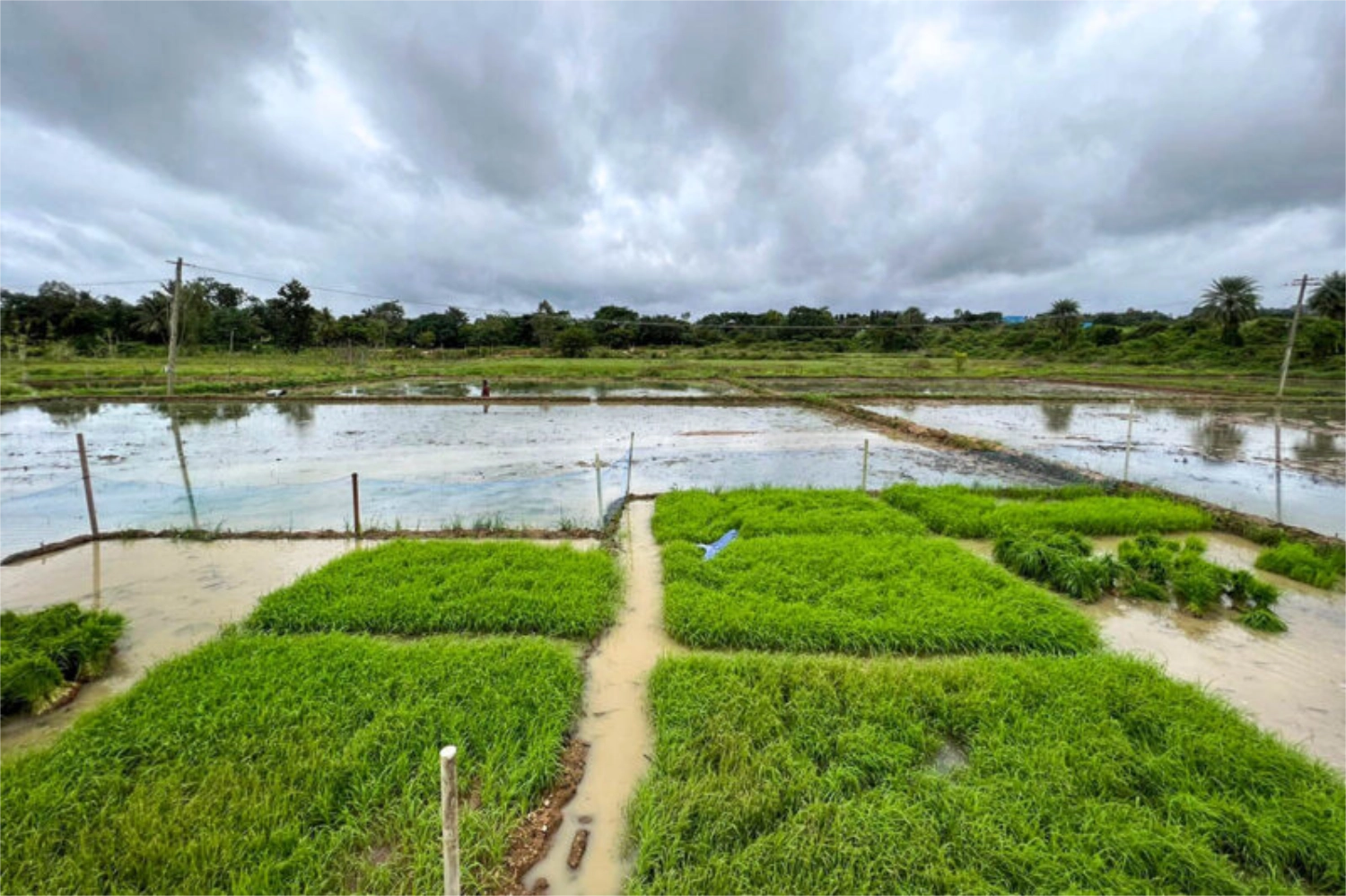
Paddy nursery bed at the Sulivara farm near Doddaladamara, Bangalore.
Men and women in multi-coloured sarees, with a shirt atop, bent over in rows and planting paddy seedlings with their feet submerged in ankle-deep, slush-filled plots is a sight to behold.
Paddy is transplanted in the months of July and August across the state of Karnataka and several other states in India. After China, India is the largest producer of rice in the world. India, which has been historically known for growing more than a lakh varieties of rice, is today left with nearly 50 varieties, with many on the verge of extinction. To this day rice continues to be the staple food for more than 50 percent of the population in India.
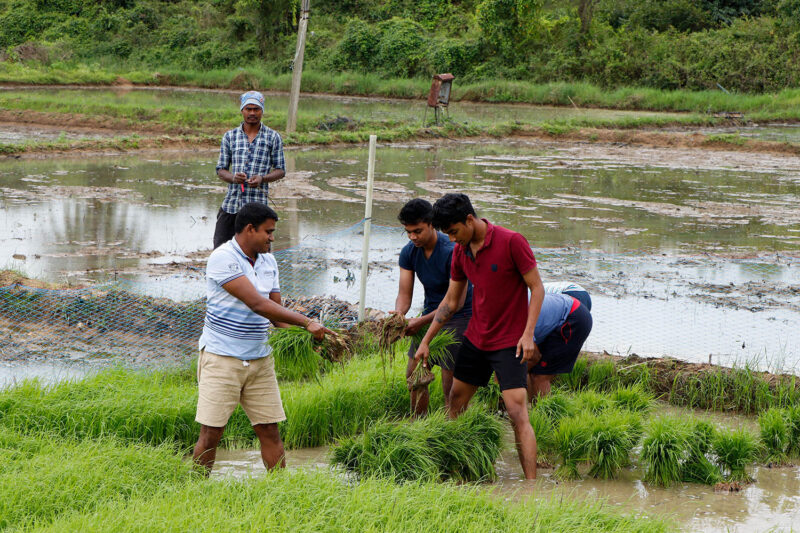
Paddy seedlings being plucked at the nursery before it is prepped for transplantation.
In its pursuit of growing food the natural way and thereby rejuvenating the soil in the process, GoodEarth’s Petrichor Agri Ventures decides to grow paddy in two acres at Sulivara near Doddaladamara, Bangalore.
Thus in a bid to revive rice varieties that have been long forgotten, Petrichor chooses to grow two varieties of rice, Kakisala (Black rice) and Mallikuruva (both indigenous to Wayanad in Kerala) here at the Sulivara farm, one of the four Petrichor’s natural farms. These two indigenous varieties of paddy are long-duration, and take anywhere between 140 to 150 days from the date of sowing.
Kakisala, the Black rice, turns light purple when cooked and is rich in Vitamins. It’s especially good for women suffering from neck and back pain and preferred as soup with pulses and fresh mushroom for children.
While Mallikuruva, the White rice, is native to Wayanad district in Kerala. It is rich in Vitamin B6, Magnesium, trace of Iron and filling especially for the aged and the adults compared to hybrid rice varieties.
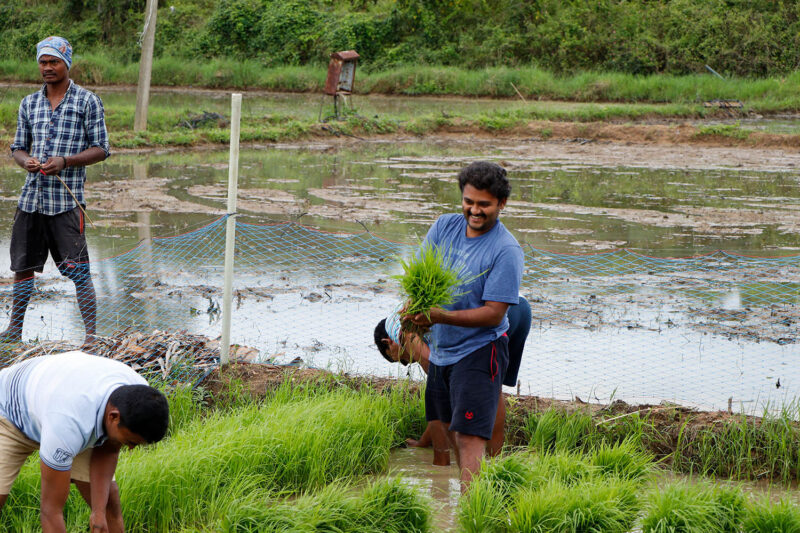
Paddy seedlings thus plucked will be formed into small bunches and piled together.
On August 6, a team from Petrichor and other interested youth from Gandhian School of Natural farming transplanted paddy under the guidance of naturalist H Manjunath.
Petrichor closely works with Manjunath whose work is guided by holistic design approaches to various aspects of agriculture and the environment.
Transplanting paddy started at around 9.20 am. The 20 days-old paddy seedlings were transplanted with a 20 cm gap between each other in the main field. It took two days to complete the task of transplanting.
In the twenty-member team, except two professional workers the rest were volunteers from the city. The motley group from GoodEarth comprised civil engineers, graduates of Agriculture Science, Geology, Botany and Physics.
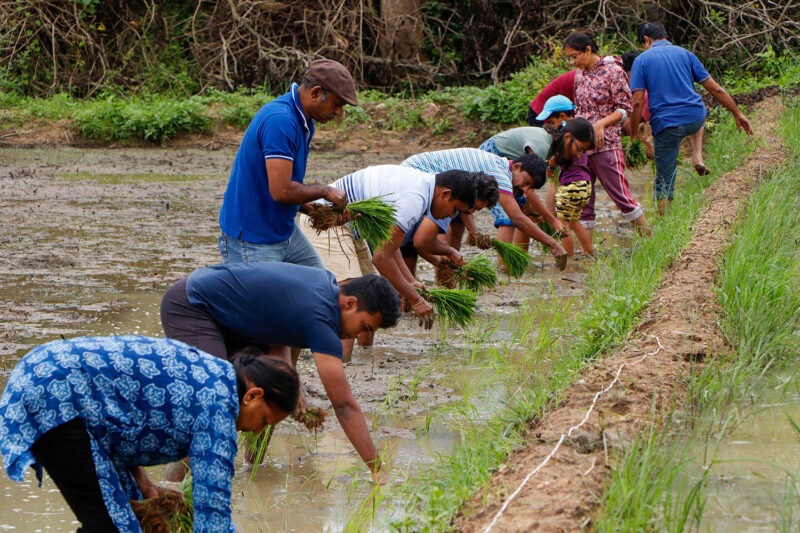
While for Balaji, an agriculture science graduate from College of Agriculture, Mandya, and now a part of the Petrichor team, growing paddy has always been a dream. Whereas for his colleague Anushree, a Botany graduate and a native of Kannur district in Kerala, paddy transplantation has been an indispensable part of her childhood memories. Having grown up seeing paddy fields in front of her home, she relived memories of transplanting paddy seedlings during her NSS days in the college.
Yet what fascinated Aastha, a BA Political Science student from Surat in Gujarat, now a volunteer at Gandhian School of Natural Farming, Tumkur, is the intense labour that goes behind growing rice, our staple food.
“A day spent transplanting paddy made me realise the effort that goes into growing rice. If only I was exposed to agriculture as a kid, I would have developed a more grateful attitude towards food and our farmers,” says Aastha.
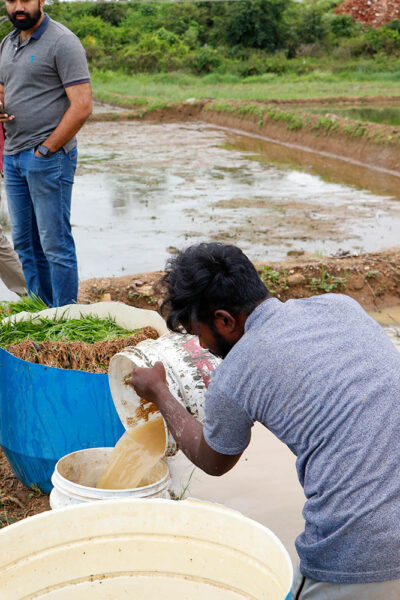
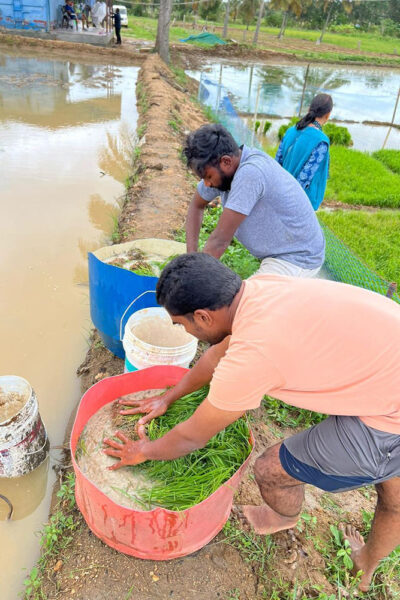
Bunches of paddy seedlings are dipped in buttermilk and Trichoderma solution to control diseases.

To avoid pests, 1/4th of the tip of the paddy seedlings is clipped.
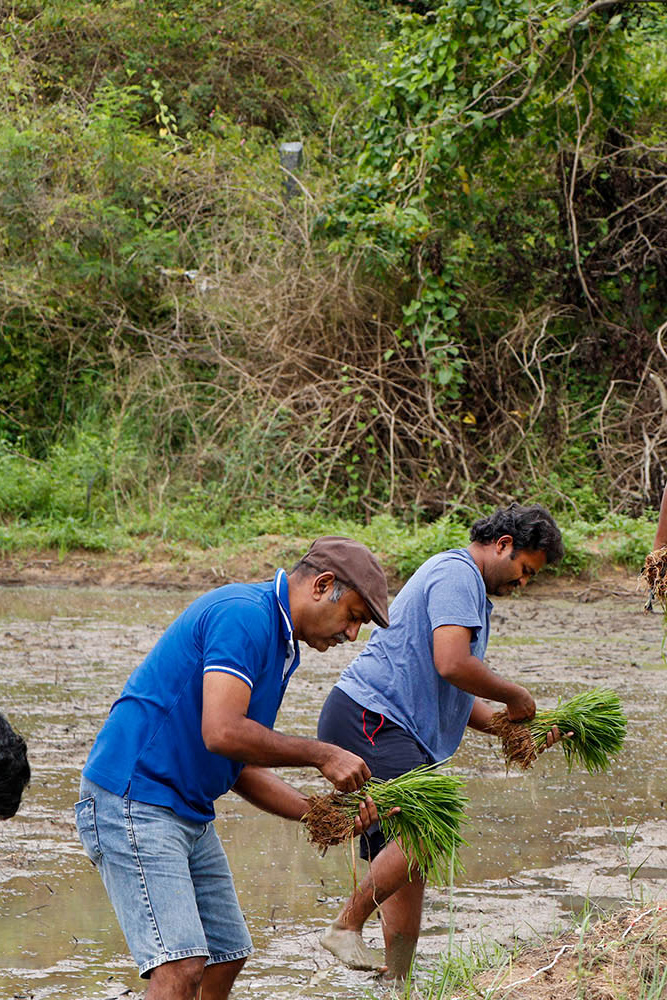
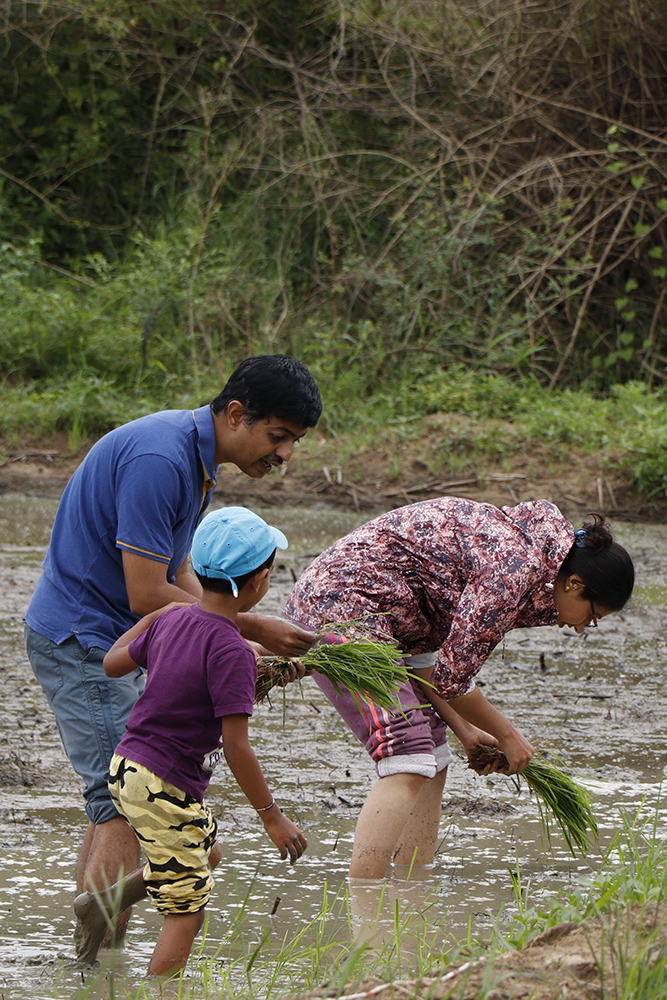
Paddy seedlings with their tips clipped and treated in buttermilk and Trichoderma solution are ready to be transplanted. Team from Petrichor together with volunteers from Gandhian School of Natural Farming transplant paddy. For many it was the first experience of getting muddied in the field and thus a memory they would cherish.
Petrichor, thus, by growing native varieties of paddy is not only reviving traditional paddy cultivation but also bringing large tracts of land under the ambit of natural farming, healing the soil, strengthening the livelihood of farmers and benefitting the health of the consumers.